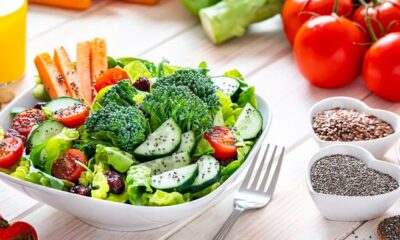In the light of studies that presents a concerning picture of the hazards associated with the use of ultra-processed food (UPF), health experts have increased calls for improving the national diet.
According to doctors, biologists, and dieticians, improving public health requires a broad-based, all-encompassing approach that includes tactics to counter the aggressive marketing of UPF, get rid of the food industry’s control over policy, and ensure that nutritious foods are affordable, available, and pleasant.
“We have a food system driven by profit and cost and that makes it a challenge, but the solutions are out there,” said Duane Mellor, a dietician and senior lecturer at Aston University. “It’s not an unsolvable problem.”
Recent research linked UPF to increased blood pressure, heart attacks, and strokes have fueled concern over the nation’s diet, with the results being hailed as a wake-up call for governments throughout the world. Prior studies have shown that people who consume the most UPF have greater incidences of heart disease, obesity, and some malignancies.
The Nova categorization created by Brazilian scholars more than ten years ago is frequently used in UPF research. Foods are categorised based on how much processing they have undergone.
Foods in Group 1 are minimally processed or unprocessed, such as fresh meat and fish, entire fruits, and vegetables.
Processed elements like salt, sugar, and oils are included in group two foods.
The third category of food includes processed items like canned fruit and vegetables.
The ultra-processed foods belong to group four. These include sweet and savoury snacks, ready meals, soft drinks, and other products with little to no intact food from group one. UPF accounts up roughly half of the diet in the UK.
There are certain flaws in the Nova classification. Wholemeal and wholegrain bread from the grocery store count as UPF, but are “probably not what we should be worrying about,” according to Mellor.
The Chorleywood method, which uses fats and emulsifiers so more water and lower-protein flours may be used, is used to make the majority of bread. Furthermore, he continues, many of the goods labelled as UPF are already subject to dietary recommendations since they are heavy in salt, fat, and sugar.
The Nova categorization has stimulated an increase in study despite its flaws. The vast majority are observational studies that seek for links between UPF and population-level ill health but cannot establish a causal link to consumption. This flaw, which is present in almost all nutritional study, causes uncertainty, which causes inaction.
The government’s scientific advisory group on nutrition stated in July that although the evidence linking UPF to harm was “concerning,” Nova’s limitations and other possible causes could also be to blame.
Others, though, demand immediate action. Chris van Tulleken, a leading authority on UPF and the author of the best-selling book Ultra Processed individuals, declared that it is urgently necessary to counsel individuals to cut back on their consumption of UPF in our national dietary guidelines. Poor nutrition is the main risk factor for early death and cardiovascular disease globally, and the research indicates that this includes consuming a lot of UPF.
He desires the black warning labels on UPF that Chile and Mexico have implemented.
Even if the UPF research has flaws, Elling Bere, a professor of public health at the University of Agder in Norway, thinks the evidence is solid enough to support warnings. He was requested to study the health impacts of UPF and provide recommendations for this year’s Nordic Nutritional Recommendations (NNR) alongside Dr. Filippa Juul from New York University.
Bere and Juul recommended that the NNR advise individuals to reduce their consumption of UPF based on the review. The recommendation was rejected when it was made available for public comment. The NNR vehemently refutes claims that the decision was influenced by the food sector.
“I was surprised because we just summed up the literature,” said Bere. “As far as I can see, the science behind the advice on eating red meat is no stronger than for UPF and they say don’t eat more than 350g of red meat a week. There’s not even a qualitative recommendation on UPF. We should think about the precautionary principle.”
Bere and Juul recommended that the NNR advise individuals to reduce their consumption of UPF based on the review. The recommendation was rejected when it was made available for public comment. The NNR vehemently refutes claims that the decision was influenced by the food sector.
Untangling how UPF might harm people’s health is currently ongoing. Foods tend to be energy rich but low in fibre and other nutrients; they also tend to be high in fat, salt, and sugar. Emulsifiers, preservatives, gelling agents, artificial colours, and tastes are all present in them.
People on a UPF diet overate and gained weight compared to those who ate fewer processed foods, according to one of the most well-known research in the topic, which was conducted by Kevin Hall at the US National Institute for Diabetes and Digestive and Kidney Diseases in Maryland.
Processing could be a problem in and of itself because it removes nutrients and makes it simpler for the body to absorb calories.“It looks like there is something in the processing that is not good for us,” said Bere.
According to Mellor, public health initiatives should emphasise encouraging a good diet rather than emphasising the risks of UPF. He advocates for the expansion of social community kitchens where individuals may prepare and purchase affordable, wholesome meals from ingredients that would otherwise go to waste.
“We can have healthy street food outlets and a pay-as-you-can approach,” he says. He continues by saying that clever marketing techniques are also required to demonstrate that healthy foods can be quick, tasty, and inexpensive.
The challenge seems big in the face of industry might.“We need to remove the influence of the industry,” says van Tulleken. “Until the major charities that inform policy, the research groups doing dietary health research, and the doctors and scientists that write in the media stop taking money from the food industry, very little will change. Just like tobacco, we need to see UPF company money as dirty.”

 Business4 weeks ago
Business4 weeks ago
 Business4 weeks ago
Business4 weeks ago
 Science4 weeks ago
Science4 weeks ago
 Science4 weeks ago
Science4 weeks ago
 Sports4 weeks ago
Sports4 weeks ago
 Business4 weeks ago
Business4 weeks ago
 Entertainment4 weeks ago
Entertainment4 weeks ago
 Technology3 weeks ago
Technology3 weeks ago









